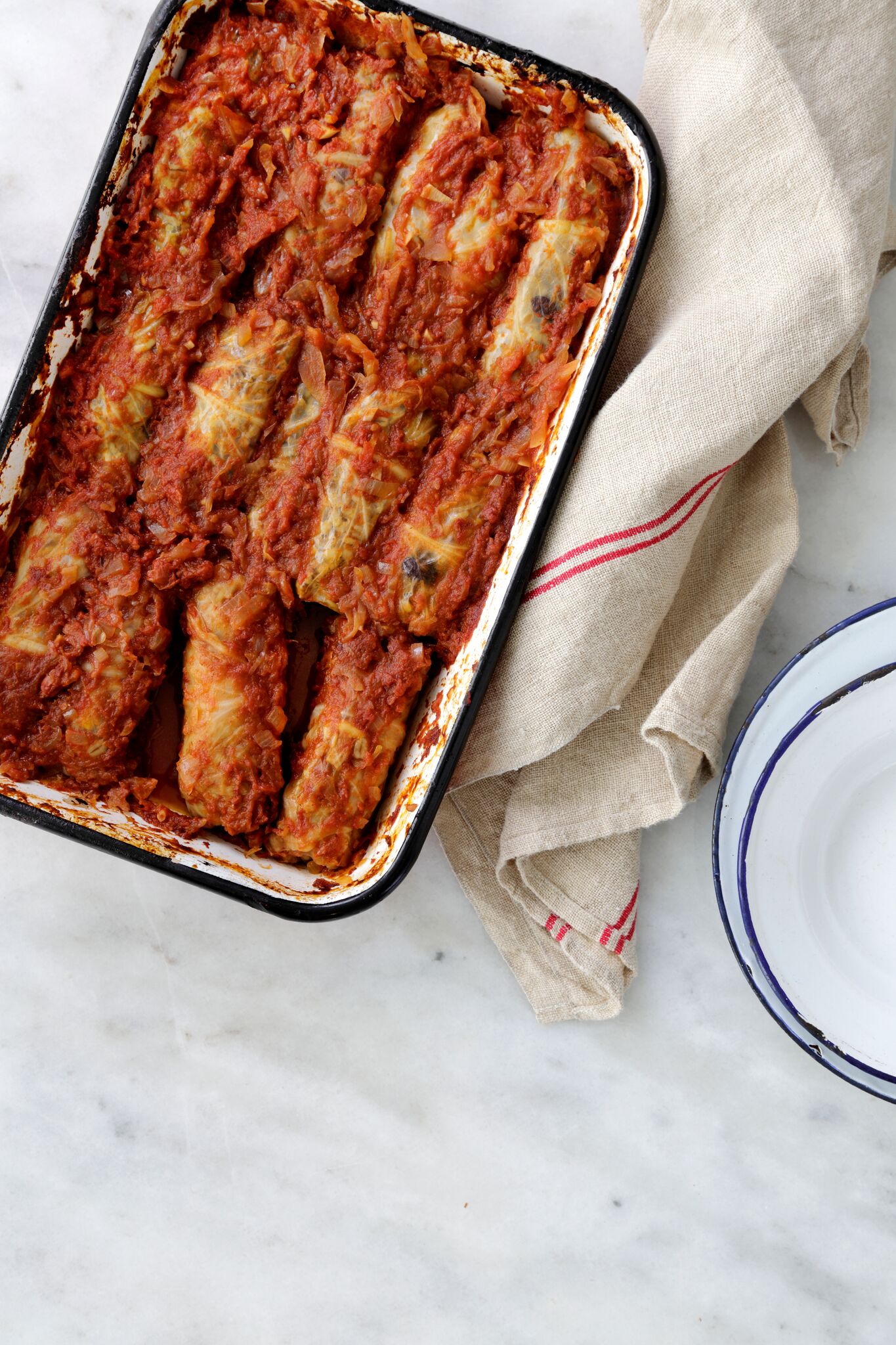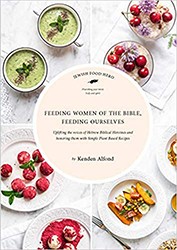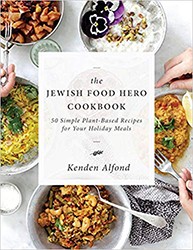
Photo courtesy of author

Plant-Based Stuffed Cabbage Rolls — Jewish Food Hero Kitchen
These stuffed cabbage rolls from the Jewish Food Hero Kitchen are as tasty and filling as traditional cabbage rolls, while being lighter and fresher in taste. The rolls can be baked or made in a slow cooker. Double the recipe if you want to serve it as leftovers the next day or if you would like guests to have more than two. This dish is just as delicious served at room temperature as it is served hot.
Traditional Stuffed Cabbage Rolls
Traditional stuffed cabbage rolls are made with a mixture of ground meat and a lot of oil. Most recipes also call for eggs to bind the meat stuffing mixture. While most of us grew up eating meat-based comfort foods like stuffed vegetables or pasta dishes with meat sauces, there are a few good reasons to leave that habit behind us.
About These Stuffed Cabbage Rolls
These plant-based stuffed cabbage rolls are hearty and delicious. They are also meat-free, dairy-free, oil-free, and filled with healthy ingredients. The filling is full of flavors and textures from the tempeh, pine nuts, raisins, and barley.
The mix of tomatoes, sauerkraut, and paprika makes the sauce very savory, slightly sweet, and tangy.
This recipe does take a bit of prep because you need to assemble a couple different elements, but the end results are phenomenal and you will be glad you put in the effort. This is a dish perfect for a Sunday gathering with friends and family. You can also assemble the dish the day before and just bake the rolls on the day you want to serve them.
Plant-Based Stuffed Cabbage Rolls — Jewish Food Hero Kitchen
Prep time:
Cook time:
Serves 8 (makes 16 rolls)
Ingredients:
2 large heads green cabbage (with nice outer leaves if possible) (you will need 16 nice large outer cabbage leaves for the rolls)
¼ cup vegetable broth, or more as needed
1 large onion, diced
4 garlic cloves, minced
3 cups tempeh, coarsely crumbled or grated
2 tablespoons soy sauce (or gluten-free tamari)
¾ cup toasted pine nuts
¾ cup dried currants or raisins
1 ½ teaspoons caraway seeds
3 cups cooked pearled barley (from 3/4 cup raw, prepared according to the package directions, OR to make it gluten-free, use 3 cups cooked rice [from 1 cup raw])
Sea salt and black pepper to taste
A touch of olive oil cooking spray to grease the casserole dish
For the sauce:
¼ cup vegetable broth, plus more as needed
1 onion, diced
2 garlic cloves, minced
2 7‑ounce jars tomato paste
2 cups vegetable broth or water
2 cups strained tomatoes
2 teaspoons sugar
3 cups prepared sauerkraut
1 tablespoon Hungarian paprika (or regular sweet paprika)
1 – 2 teaspoons sea salt, to taste
black pepper to taste
Optional:½ cup tofu “sour cream” (see the recipe in Mushroom Soup)
Tools
Large pot
Tongs or large slotted spoon
Colander
Large skillet
Medium saucepan
Plate to assemble rolls
Glass baking dish (9 x 13 inch)
Parchment paper and aluminum foil
Optional: Slow cooker
Instructions
- Start by making the sauce for the cabbage rolls. Heat the vegetable broth for the sauce in a medium saucepan over medium heat. Add the onion, garlic, and a pinch of sea salt. Cook, stirring occasionally, until the onion is soft, around 5 – 10 minutes.
- Add the remaining ingredients for the sauce, lower the heat to low, and cover with a lid. Continue cooking, stirring occasionally, until the sauce thickens up slightly, around 20 minutes.
- While the sauce is simmering away, work on the filling for the cabbage rolls. In a large skillet, heat the vegetable broth for the filling over medium heat. Add the onion, garlic, and a pinch of sea salt. Cook, stirring occasionally, until the onion is soft, around 5 – 10 minutes.
- Stir in the tempeh and soy sauce, and cook for 15 minutes, adding more broth if needed to prevent sticking.
- Add the pine nuts, currants, caraway seeds, and pearled barley. Mix well and season with sea salt and pepper to taste. Remove from heat and set aside.
- Preheat the oven to 350 degrees F.
- Next, work on the cabbage leaves. Carefully drop 1 head of cabbage into a large pot with boiling water.
- After 5 minutes, remove the cabbage with tongs or a large slotted spoon, and place in a colander in the sink or over a large bowl to cool.
- When cool enough to handle, carefully remove the outer leaves. You will need 16 leaves, so you can repeat this process and boil the same head of cabbage again to be able to remove more leaves, or you can boil the second head of cabbage if necessary.
- To assemble the cabbage rolls, place a cooked cabbage leaf on a plate and put a generous scoop of the tempeh-barley mixture on top, in the center of the leaf. Roll up the leaf over the filling starting from the bottom, then fold in each side, and lastly the top, tucking the seam underneath.
- Repeat with the remaining leaves until you have 16 nicely filled cabbage rolls.
- To bake the stuffed cabbage rolls, lightly oil the casserole dish and pour enough sauce to cover the bottom of the dish.
- Place the stuffed cabbage rolls on top of the sauce and cover with the remaining sauce. Wrap the casserole dish with a sheet of parchment paper and then with a sheet of aluminum foil. Bake for 1 hour.
- After 1 hour, check the cabbage rolls and add a little water if they have started to dry out. Bake for another 15 minutes, until they are tender when pierced.
- If using a slow cooker: Cook the rolls in the sauce on low for 8 hours or until desired doneness.
- Serve family style at the table, hot or at room temperature. Enjoy!
If you like this recipe, you’ll love the Jewish Food Hero Cookbook: 50 Simple Plant-Based Recipes for Your Holiday Meals
Kenden Alfond is a psychotherapist who began Jewish Food Hero because she was looking to connect with other Jewish people who care about healthy food and modern Jewish life. Jewish Food Hero aims to create a positive community of members from all over the world who want to bond over recipes and Jew-ish stuff.



